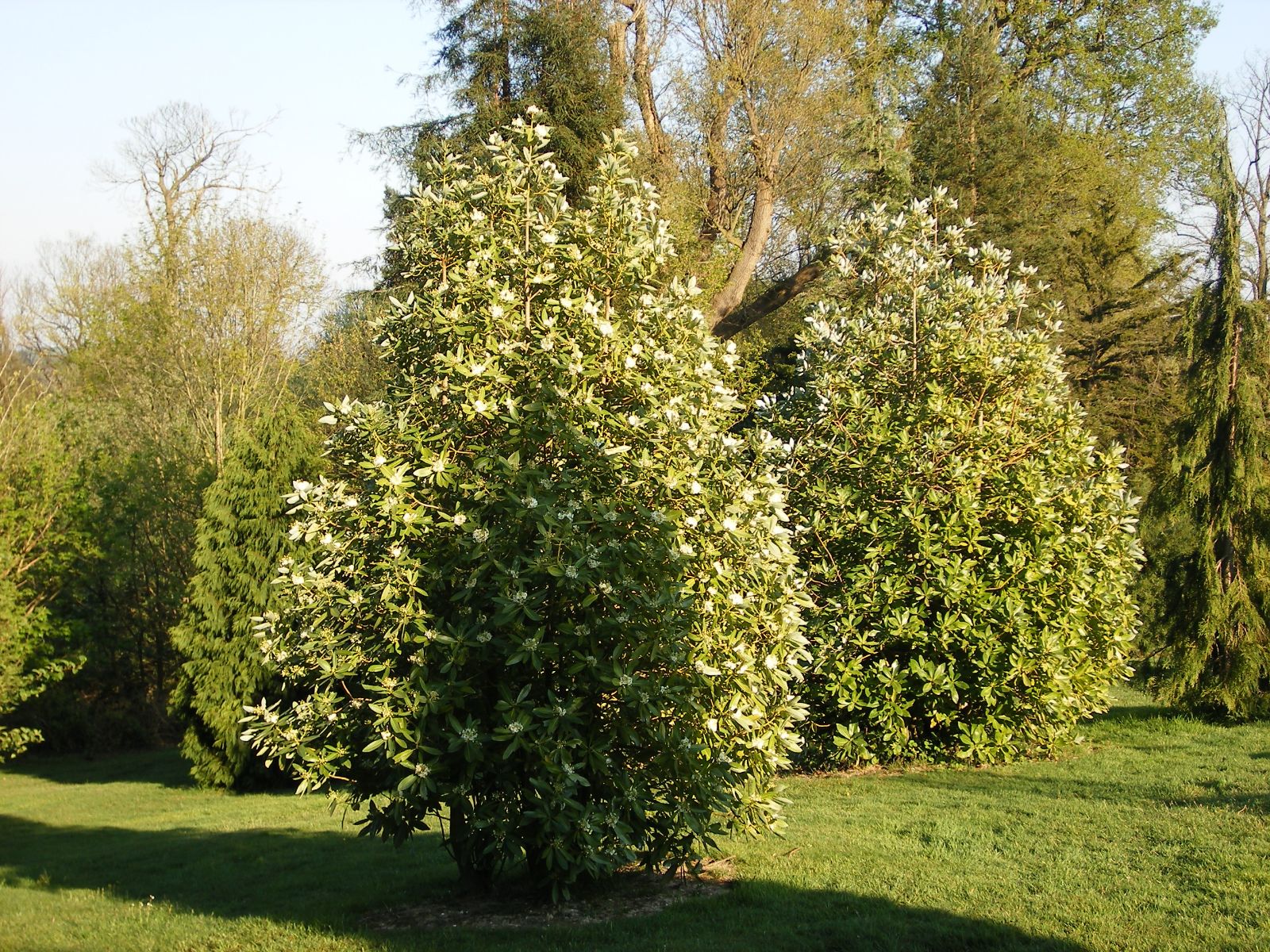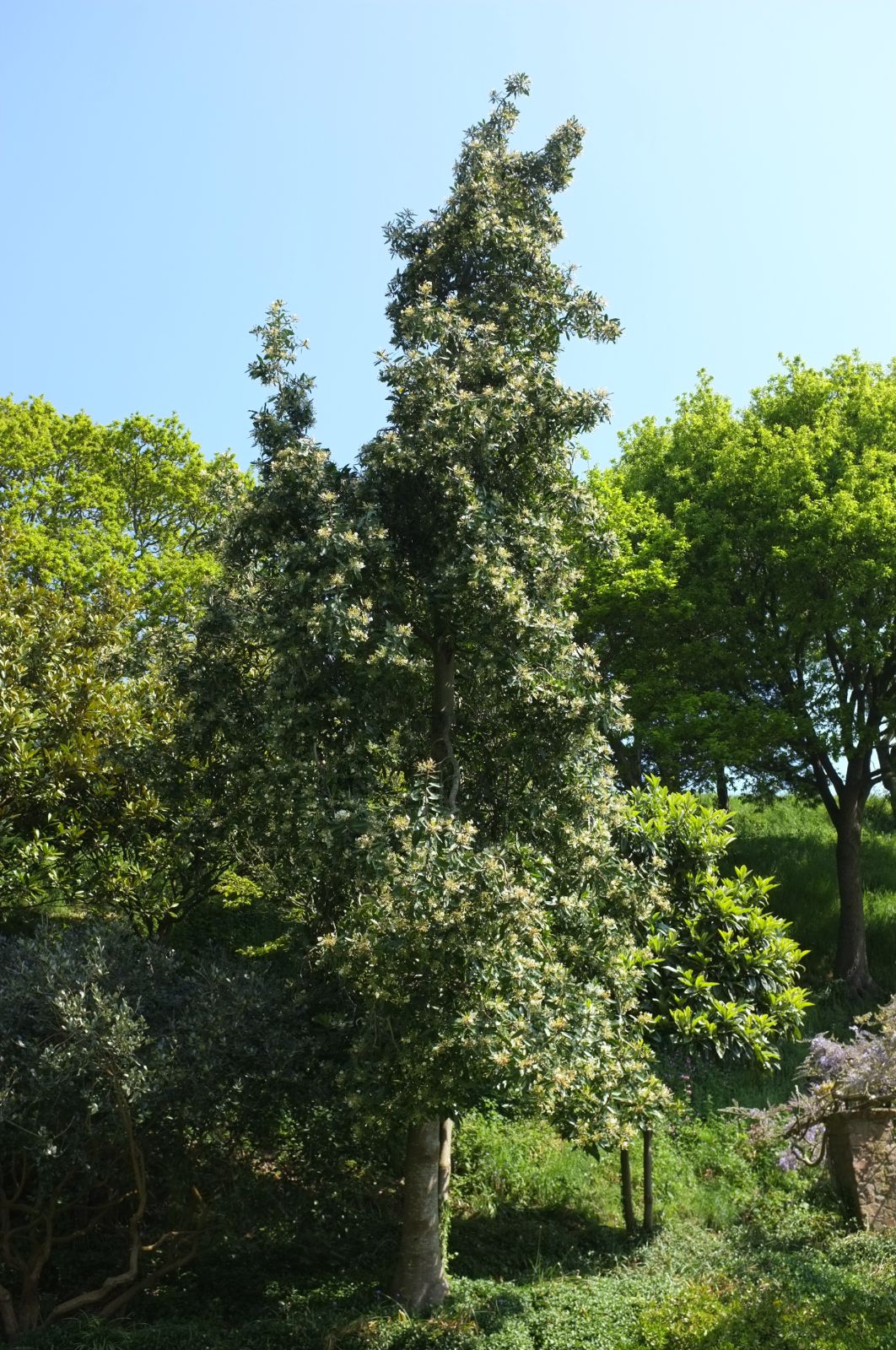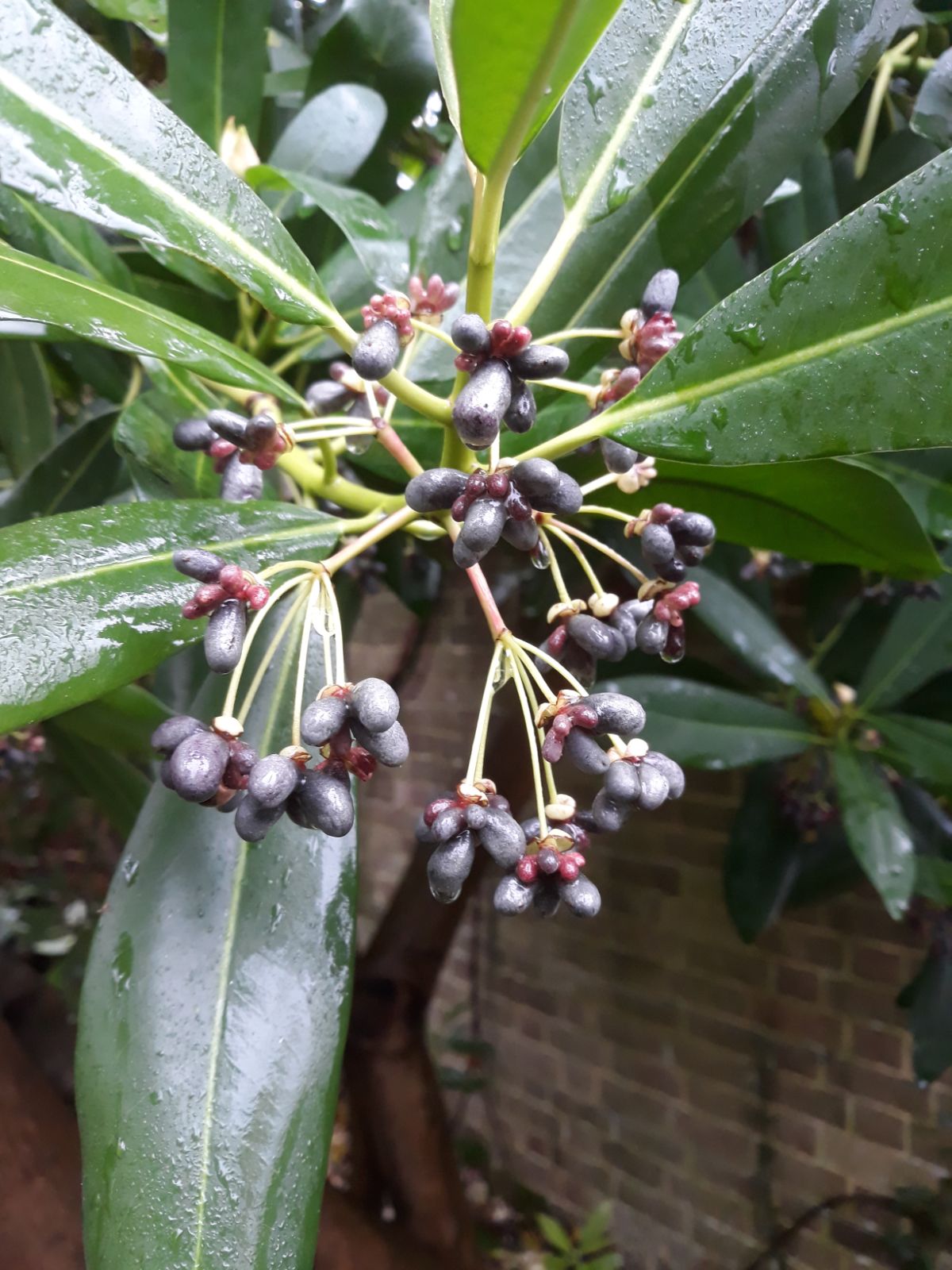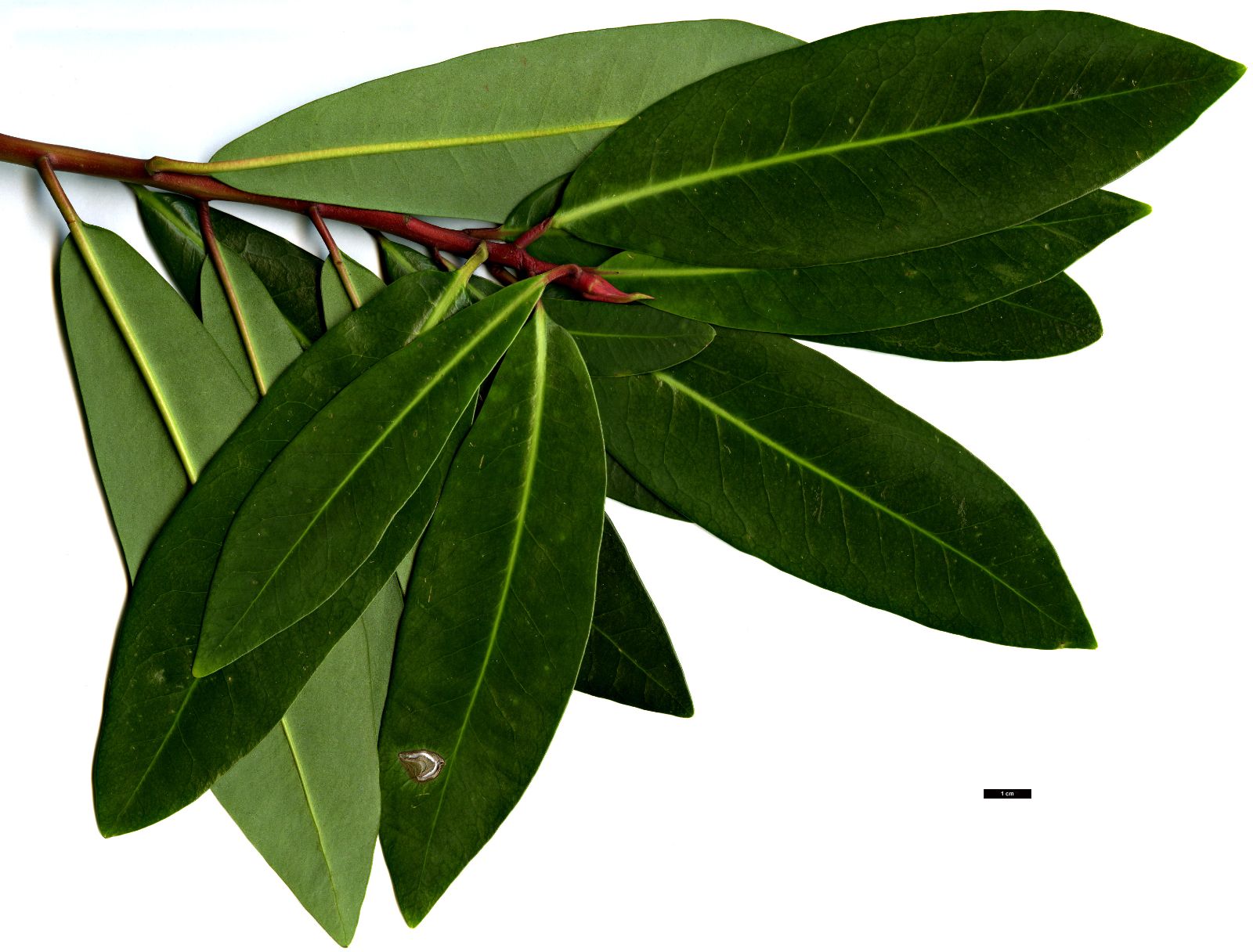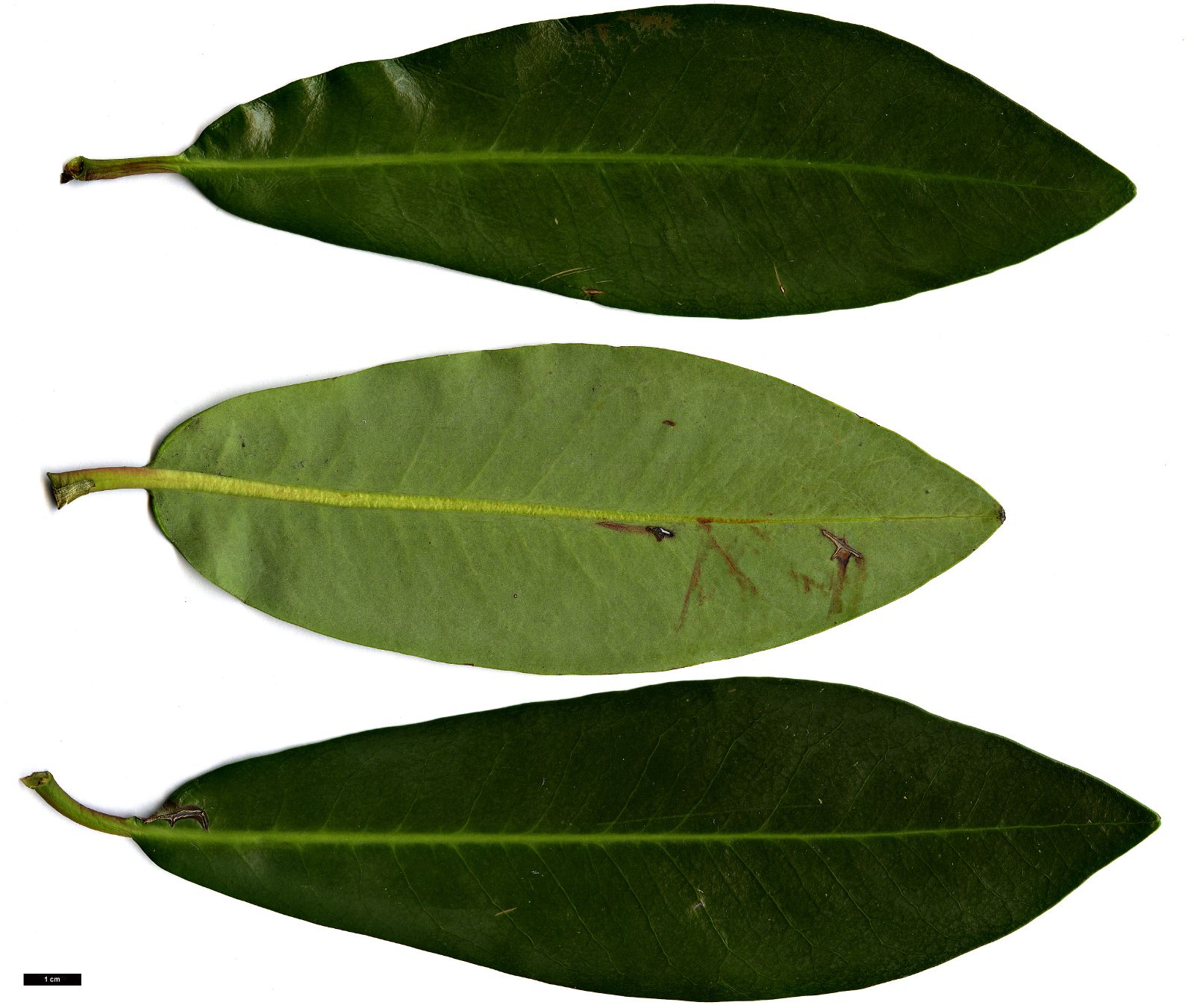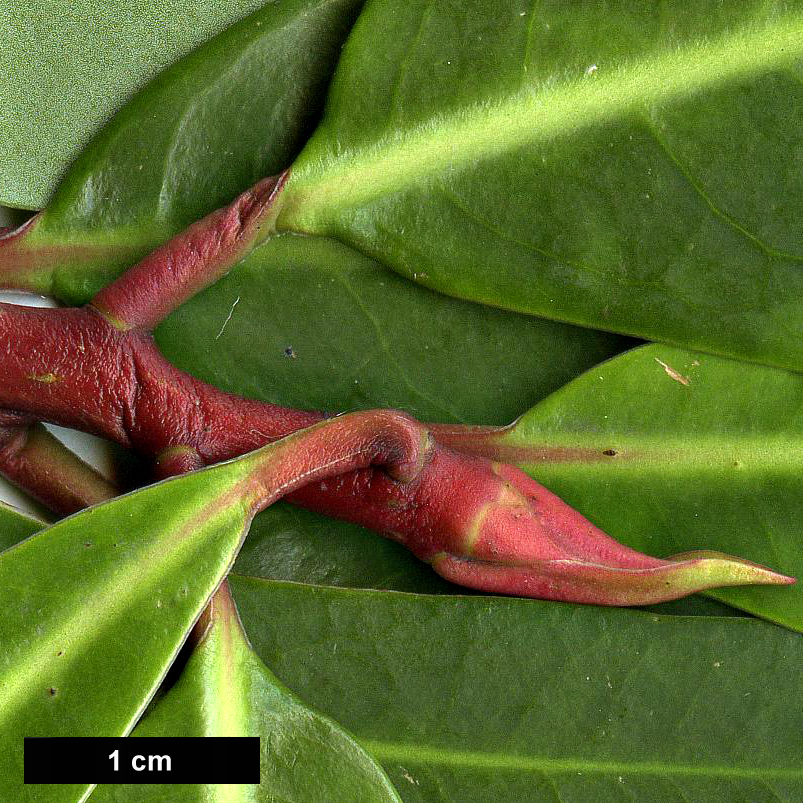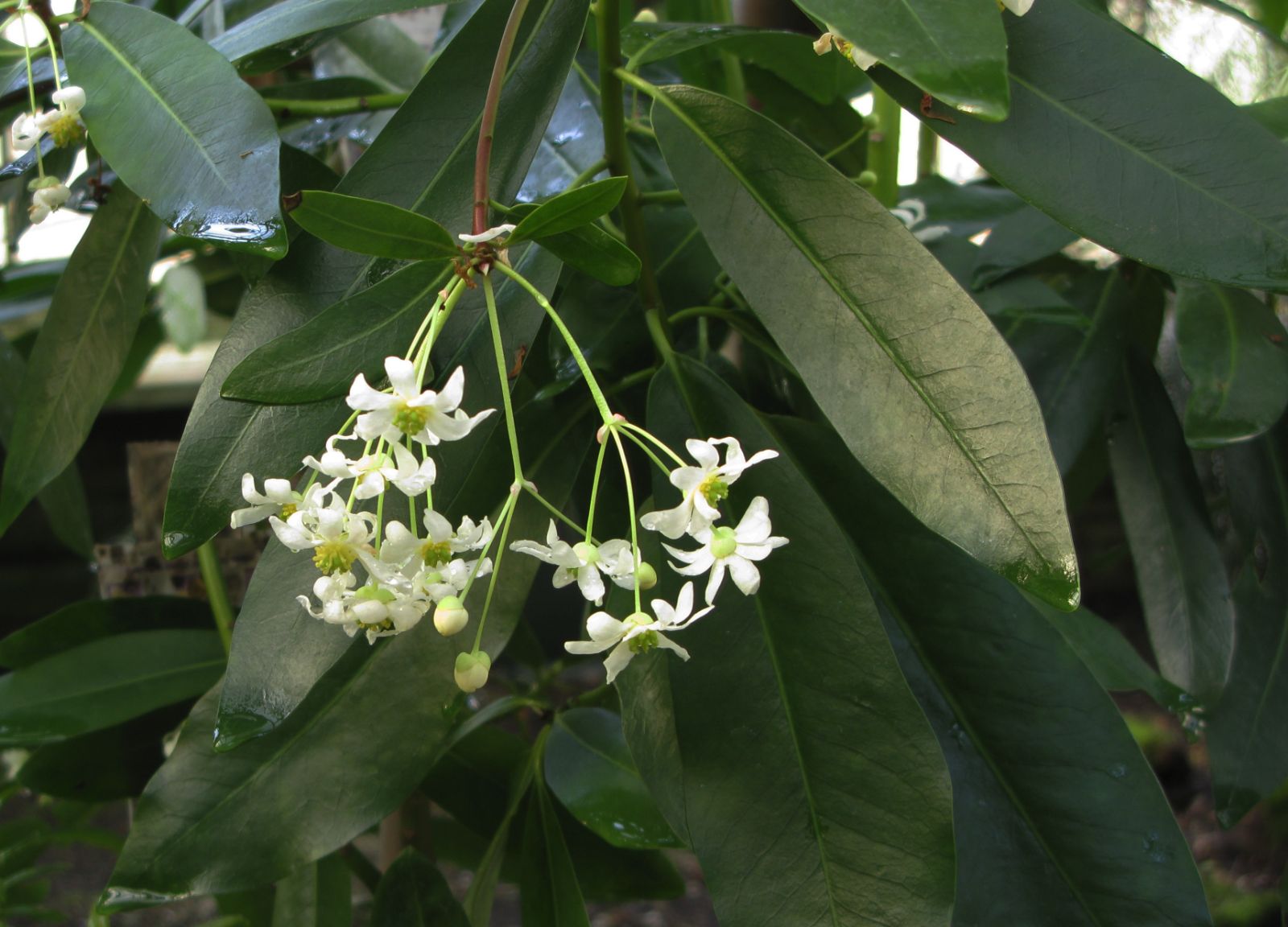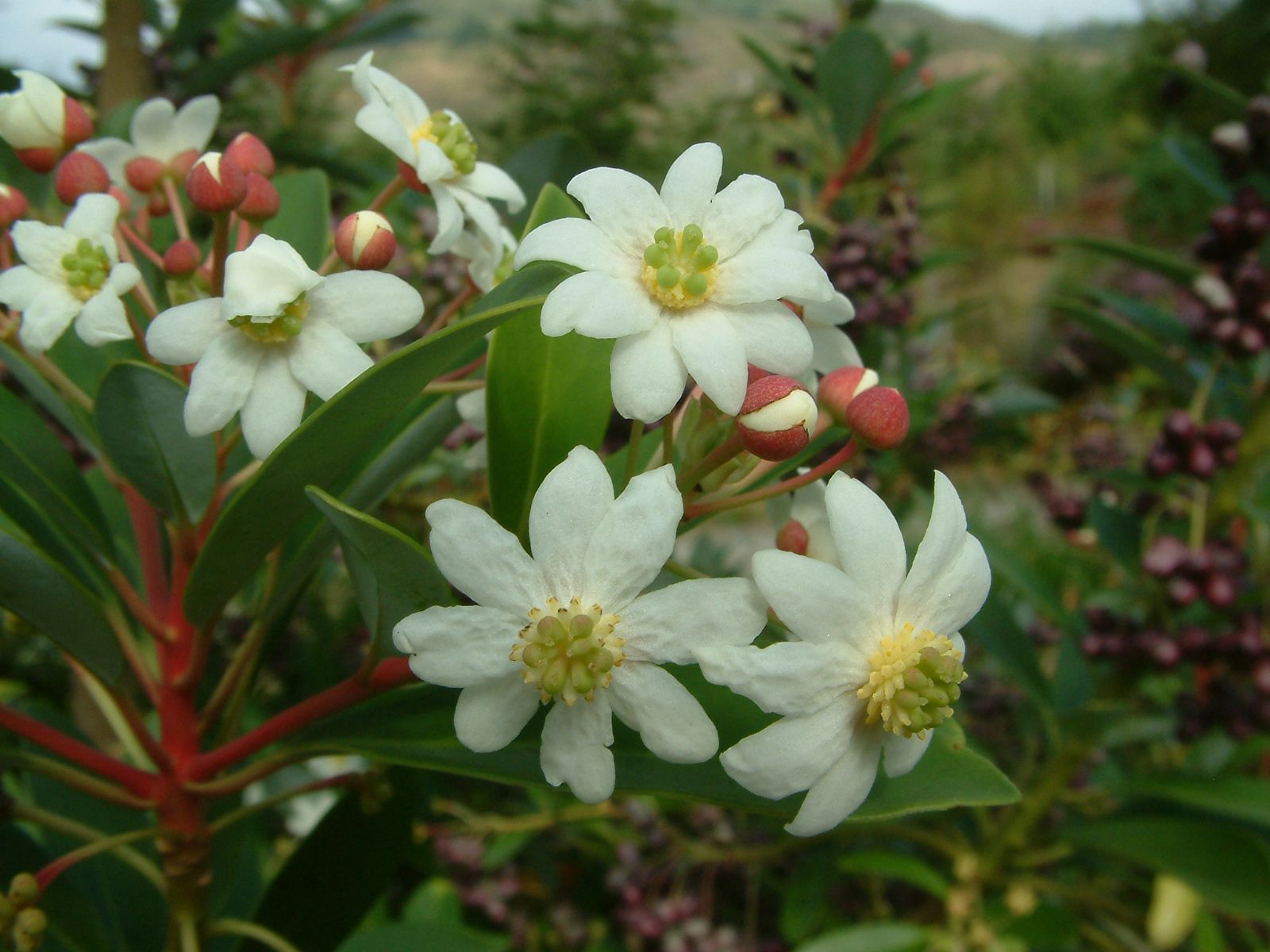An evergreen tree to about 50 ft, or a large shrub, usually of rather conical habit, with a greyish, highly aromatic bark. Leaves entire, oblong-elliptic to oblanceolate, up to 71⁄2 in. long, 11⁄2 to 23⁄4 in. wide, acute to rounded at the apex, light or dark green above, more or less glaucous beneath; stalks up to 1 in. long. Inflorescence umbellate or fascicled; individual flowers on pedicels up to 1 in. long, ivory-white, fragrant, to 11⁄2 in. across; petals oblong elliptic, variable in number from about five to twenty; stamens numerous; carpels four to ten. Fruit compound, each fertilised carpel becoming fleshy and bearing up to about fifteen seeds.
If interpreted in a wide sense, D. winteri is a species of enormous range, from Tierra del Fuego to Mexico. But A. C. Smith, in his monograph on the American species of Drimys (Journ. Arn. Arb., Vol. 24, pp. 1–33, 1943) recognises four species and restricts D. winteri to the region from Central Chile southward. He recognises two lowland varieties:
From the Supplement (Vol. V)
On page 70, in the fifth paragraph, Don was quoted to the effect that it was Capt. William Winter who accompanied Sir Francis Drake. In fact it was William Winter’s nephew, John Winter. We are indebted to Dr Brian Mulligan for this information.
Another distinguishing character of the ‘var. latifolia’ of gardens is that the flowers are white, against yellowish in what is cultivated as D. winteri simply.
In northern South America and in Central America D. winteri is replaced by the related D. granadensis L.f. This species is represented in southern Mexico by var. mexicana (DC.) A. C. Smith, a shrub or tree to about 40 ft high with narrowly elliptic-oblong leaves 3 to 6 in. long, 3⁄4 to 2 in. wide, equally green on both sides. Seed of this Mexican variety was collected by James Russell in the Sierra de Chiconquiaco, south of Misantla, Vera Cruz, in 1984.
var. andina Reiche
A very distinct variety of dwarf habit found in tree-line woodland in the Andes and the coastal range, where it grows to about 3 ft tall, but flowers freely when only a third of that size. Introduced by Comber in 1926 from near Llolli on the frontier between Chile and Argentina at 4,000 ft. A plant in the walled garden at Nymans in Sussex, raised from his seeds, is now, after forty years, about 5 ft high and 12 ft across.
var. chilensis (DC.) A. Gray
This variety is of more northerly distribution, from 30° 30’ to about 44° 40’ S. Leaves distributed more evenly along the branchlets than in the preceding. Inflorescence compound, consisting of four to five simple umbels, each with four to seven flowers; petals six to fourteen. This variety appears to be what is commonly cultivated as
D. winteri and is figured in
Bot. Mag., t. 4800, and n.s., t. 200. Unless the typical variety comes into cultivation the distinction is scarcely worth recognising in garden nomenclature. For the more distinct var.
andina, see below.
D. winteri var.
latifolia was described by Miers in 1858 from a specimen collected by Bridges near Valdivia. In this specimen, preserved in the Kew Herbarium, the leaves are oblanceolate, up to 5{3/4} in. long, 2{5/8} in. wide, with a rather broad roundish or abruptly acuminate apex. It is part of the normal variation of the species and is given by Smith as a synonym of var.
chilensis (see further below).
D. winteri first became known to science in 1578 when (to quote Don’s account) ‘Capt. William Winter, who went out with Sir Francis Drake, when he went round the world, at his return brought the bark of this tree with him from the Straits of Magellan. He had found it to be very useful to his ship’s crew, both instead of other spices to their meat, and as a medicine very powerful against the scurvy.’ It was described some two centuries later from a specimen collected on Cook’s second voyage.It is interesting that
D. winteri is most tree-like and most prominent in the forest vegetation in the far south of the continent; in the northern part of its range, in spite of the warmer climate, it makes a small tree, preferring damp soils, where it forms colonies known as ‘Canelares’. Although mainly a Chilean species, it also occurs in Argentina, mainly in Tierra del Fuego, but also on the eastern side of the Andes in Santa Cruz province and on the western shores of Lake Nahuel Huapi.The form of
D. winteri once commonest in gardens is of shrubby habit, with numerous stems from the base. The plant at Kilmacurragh in Eire is of this habit; it is a vast bush about 50 ft high, and one of its many stems is 8 ft in girth (1966). The leaves are oblong-elliptic to oblong-lanceolate, up to 6{1/4} in. long and 2 in. wide, bluntly acute to slightly acute at the apex, scarcely glaucous beneath. A plant at Trengwainton in Cornwall has similar foliage and habit and belongs, as probably does the Kilmacurragh plant, to the var.
chilensis.Plants are also in cultivation which are more slender and upright than is the form just mentioned, with definite leaders, in this respect resembling
D. winteri as usually seen in the Andes. The origin of this form is not known, but according to the catalogue of the collection at Fota, Co. Cork, sent to Kew by the Hon. Mrs Bell, the two original trees there came in 1903 as seedlings from Wakehurst Place, Sussex, where they had been raised from seeds collected in South America. There is strong though not conclusive evidence that the seeds came from H. J. Elwes, who visited the Andes in the southern summer of 1901–2. There are two fruiting specimens in the Kew Herbarium collected by him during this visit. According to a note on these provided by Mr Philcox of Kew, one came from the Renaico Valley (in the Andes east of Temuco) and has leaves elliptic-oblong, slightly glaucous beneath. The other, from near Lake Llanquihue (at the southern end of the central valley of Chile), has leaves obovate to oblong-elliptic, glaucous beneath. Of the two originals at Fota one, which no longer exists, had narrower leaves than the other, which is listed as
D. winteri glauca latifolia in the Fota catalogue. This is about 35 ft high. There is also a beautiful narrow-habited tree at Mount Usher in Co. Wicklow, about 40 ft high, with the leaves pale green above and silvery beneath.The tree-like forms are often known in gardens as “var.
latifolia”, and a plant under this name received an Award of Merit when a flowering branch was exhibited by Gerald Loder from Wakehurst Place in 1930. The plant there no longer exists, but it most probably came from the same batch of seeds as the Fota plants. A tree at Trengwainton in Cornwall, also known as
D. winteri “var.
latifolia”, certainly has leaves larger and relatively broader than in the old form, and is more slender in habit, with a definite leader. But in the Savill Gardens there is a tree of similar habit, propagated around 1950 from one growing at Lanarth in Cornwall, in which the leaves are slenderly oblanceolate and quite different from those of the Trengwainton plant or of the type-specimen of var.
latifolia Miers. It has been said that the “var.
latifolia” of gardens is hardier than the bushy form but this may not hold good generally. It should be added that there would seem to be no foundation for the belief that the “var.
latifolia” always has green stems. The Trengwainton plant is shown as having green stems in the figure in the
Botanical Magazine, but they were red in a specimen from the same plant seen in 1970. The plant in the Savill Gardens, which is “var.
latifolia” of gardens in the sense that it is tree-like in habit, has the stems and petioles strongly tinged with red.
D. winteri is not reliably hardy outside the milder parts, where it thrives. In southern England it should survive most winters in a well-sheltered position but would be safer against a wall. It is certainly worth persevering with, for there are few more beautiful evergreens than
D. winteri in its finest forms, with their soft-green leaves, silvery beneath, and spire-like habit. It has no objection to chalky soil, but being a moisture-lover it is not likely to thrive where the soil is dry or shallow. It can be propagated by cuttings of half-ripened wood, or by layers. Fertile seeds are often borne, but cannot be relied on to reproduce all the characters of the parent.
var. winteri
Synonyms
D. winteri var. punctata (Lam.) DC.
D. punctata Lam
This is the typical variety, found mainly south of 42°S. Leaves clustered at the ends of the branchlets. Inflorescence with one-flowered peduncles, more rarely umbellate; flowers with five to seven petals.

